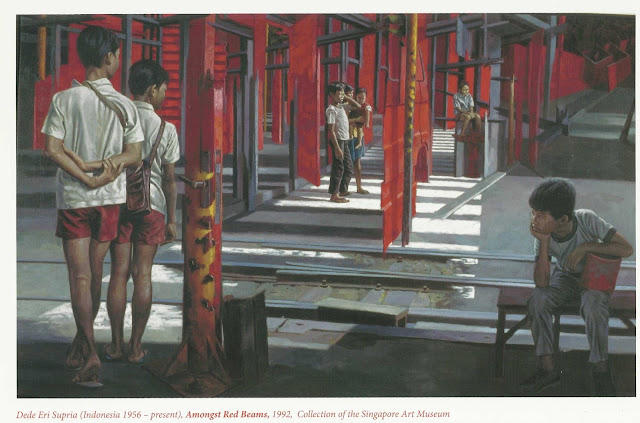Artists use different methods to represent pictorial space on 2-D surfaces. To put it simply, pictorial space is illlusionary depth that gives the viewer the impression that objects are receded back or placed forwards in the picture plane. The picture plane or picture surface is the 2-D painting surface and harnessing pictorial space creates a 3-D effect. Methods used to construct pictorial space included the use of geometric projection, scientific and mathematical perspective, layered and atmospheric perspective, multiple-perspectives, fragmentation, colours, lines and tonal variations.
General Questions
1. Can you identify how the artist develops a push-and-pull effect of pictorial space?
2. How is the subject matters of the painting affected by the use of pictorial space? Analyse how the painting’s physical and spatial composition places the subject within a certain context.
3. What impression does the use of pictorial space have on the viewer? Do you feel disoriented? Or does this enhance the realistic perception of the image?
Insanity
Gouache on canvas
122 x 162 cm 1993
Collection of SAM
Ginger Tea
Oil on canvas 49 x 39 cm 1957
Collection of SAM
Untitled
Oil on canvas 104 x 252 cm 1994
Collection of SAM
Yang Menghilangkan Dirinya
Oil on canvas 138.5 x 109 cm 1994
Collection of SAM
Herons
Chinese ink and colour on paper 123 x 245 cm 1990
Collection of SAM
Mountain Scenery
Chinese ink and colour on paper 106 x 56 cm 1962
Collection of SAM
Amongst Red Beans
Oil on Canvas 95 x 149 cm 1992
Collection of SAM







No comments:
Post a Comment